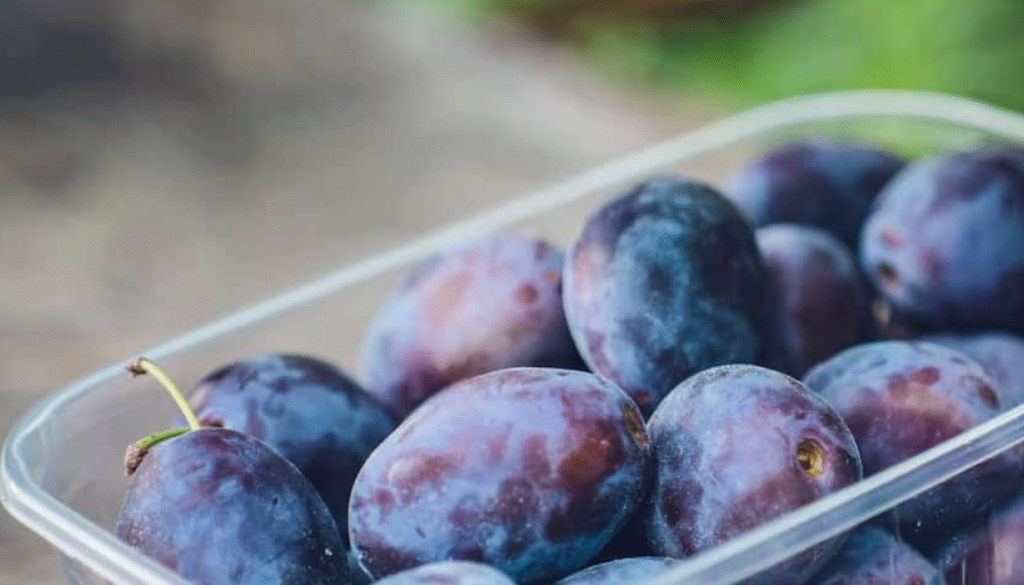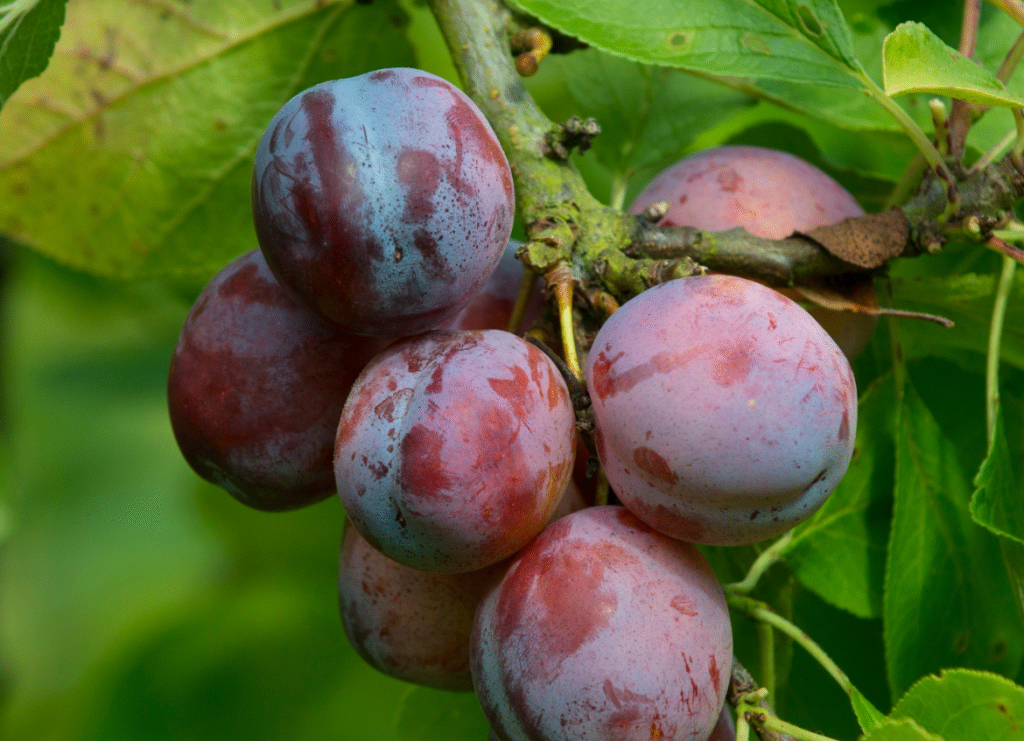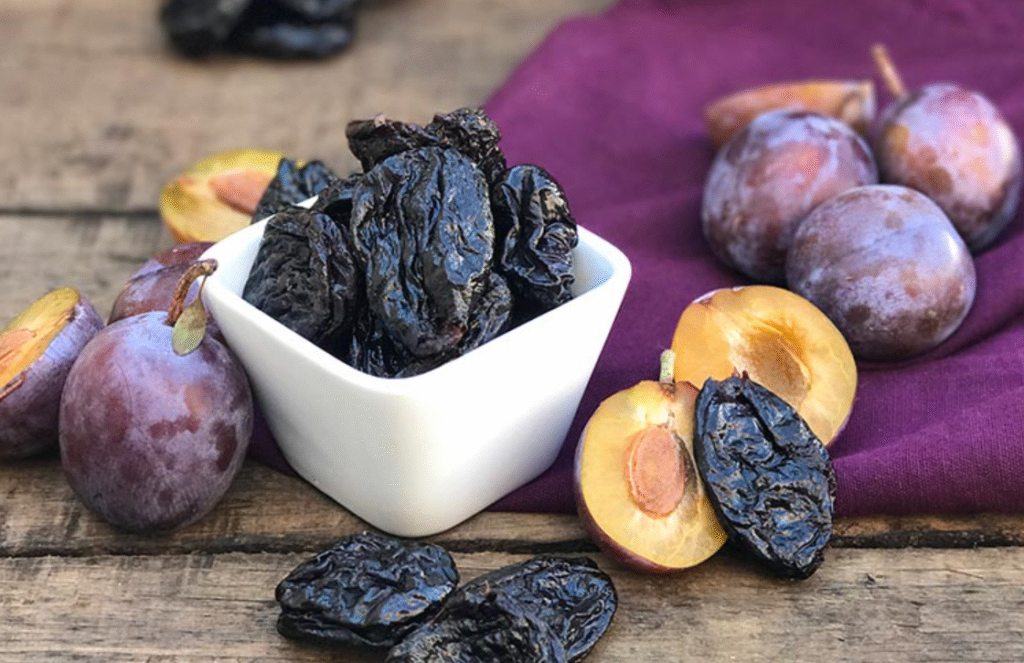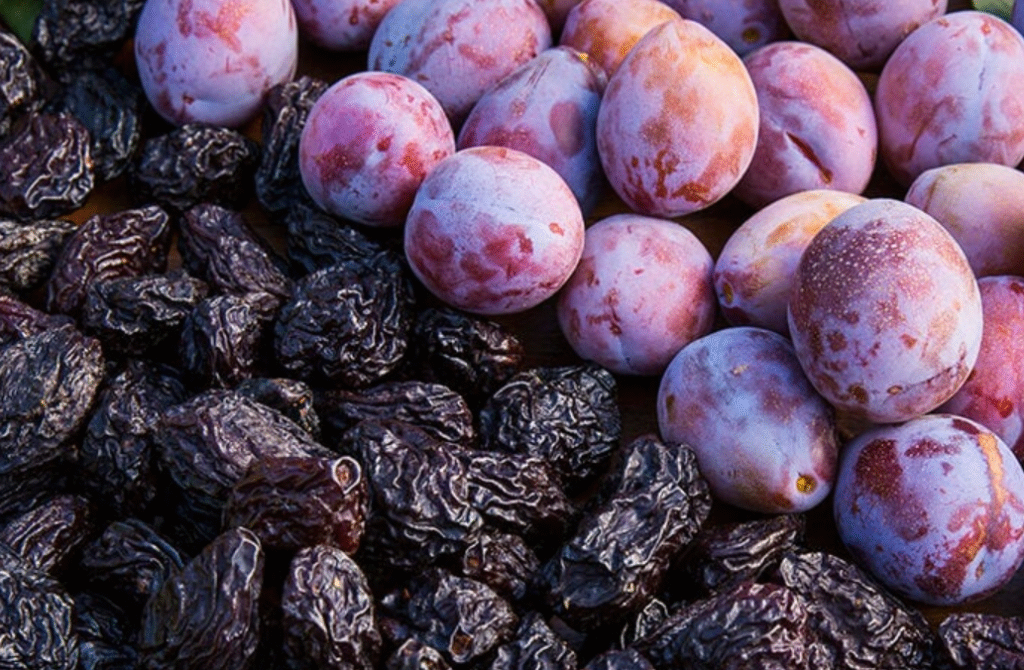Table of Contents
Fruits play an essential role in a balanced diet, and there is no shortage of options for us to choose from. One of the popular picks are plums and prunes – both come from the same family, but what exactly sets them apart? From their taste, nutritional content, and how they’re used in everyday cooking or baking; understanding these differences can help you make the best selection for your health needs.
In this blog post, we will be looking into just that – comparing prune vs plum so you know what makes each one unique!
What is Prune?

Prunes are dried plums that have been treated with sulfur dioxide to preserve their flavor and color. They are smaller than regular plums, and they have a wrinkled skin and a deep purple-black hue. Prunes are also slightly sweeter tasting than fresh plums.
What is Plum?

Plum refers to the fresh fruit from the Prunus domestica family tree. It has a sweet taste and firm texture, which makes it perfect for both raw consumption (as snacks) or cooked dishes such as pies or jams. The skin is usually red or yellow in color and ranges from round to oval shape. Plums contain plenty of beneficial vitamins, minerals, and fiber – making them an excellent choice for your health needs.
Characteristics of Prunes
Skin Color: Prunes are typically dark purple or black when dried
Texture: When rehydrated, prunes have a soft, chewy texture
Flavor: Prunes have a sweet and tart flavor.
Storage: Dried prunes can be stored for several months at room temperature in an airtight container.
Uses: They can be used in cooking, baking and making smoothies.
Characteristics of Plums
Skin Color: Plums are usually red, purple or yellow when ripe
Texture: Fresh plums have a soft, juicy texture.
Flavor: Plums have a sweet flavor with some tartness.
Storage: Fresh plums can be stored for about a week in the refrigerator.
Uses: Plums can be used to make sauces, jams and desserts. They can also be eaten raw or cooked into savory dishes.
Nutritional Properties

Prunes have a high fiber content and are rich in antioxidants, potassium and iron. Prunes can also help to prevent constipation, regulate blood sugar levels and reduce cholesterol levels. Plums, on the other hand, are rich in vitamin C and contain beneficial plant compounds that can help protect against chronic diseases such as heart disease and cancer.
Advantages and Disadvantages
Prunes have the advantage of being shelf-stable and able to be stored for longer periods of time than fresh plums. They are also much easier to transport due to their light weight and smaller size. The downside is that prunes lack the fresh flavor of plums, and they can be more expensive to purchase in some cases. Plums offer a fresher taste, but they must be eaten quickly or preserved as jams or sauces in order to maximize their nutritional benefits.
Which One Is Healthier?

Both prunes and plums offer nutritional benefits, but the most important factor to consider is how you plan on using them. If you are looking for a snack or to add sweet flavor to a dish, fresh plums may be your best choice. Prunes are better if you need something that lasts longer in storage or has more fiber content.
Suggestions
For snacking, fresh plums are the way to go as they are juicy and sweet. For baking or cooking, prunes can be used to add sweetness without needing to add extra sugar. If you need a healthy topping for yogurt or oatmeal, try adding chopped plums with some honey and cinnamon. Lastly, if you need something that lasts longer, prunes are the way to go as they can be stored for several months.
Frequently Asked Questions | Prune vs Plum
1. Are prunes healthy?
Yes! Prunes are high in dietary fiber, which helps to promote digestive health and can help you feel fuller for longer periods of time. They’re also packed with essential vitamins and minerals, including vitamin K, potassium, iron and magnesium.
2. How do I use prunes in cooking?
Prunes can be used in both sweet and savory dishes. They can be stewed with apples and spices for a sweet side dish or added as a topping to oatmeal, yogurt or ice cream. Additionally, they can be used in stuffing, baked goods and sauces.
3. How many calories are in prunes?
One serving of prunes (about five pieces) contains 100 calories and 21 grams of carbohydrates.
4. Are prunes good for weight loss?
Yes! Prunes help to keep you full longer due to their high fiber content, which reduces hunger and helps prevent overeating. Plus, they contain fewer calories than other dried fruits like dates or raisins, making them an ideal snack if you’re trying to lose weight.
5. Are prunes and plums the same thing?
No, they are not. Prunes are a type of dried plum that has been dehydrated for preservation, while plums can be eaten fresh or cooked.
6. Can I eat prunes if I’m diabetic?
Yes, but it’s important to keep in mind that prunes do contain natural sugars and carbohydrates, so diabetics should monitor their intake carefully. Also, since prunes can help with digestion, eating them may improve blood sugar control as well.
The Bottom Line
Prunes and plums both offer health benefits, but it is important to consider how you plan on using them. Prunes are great for longer-term storage, while fresh plums are best for snacking. Ultimately, the choice will depend on your needs and preferences. Whichever one you choose, rest assured that both of these fruits can add a boost of flavor and nutrition to any meal!
Read more at Ohsnap Cupcakes!